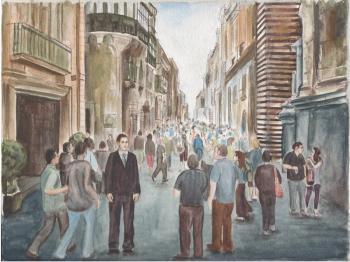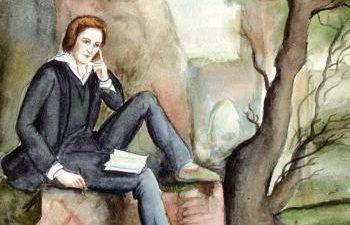‘Upon a Company of Bad Dancers to Good Music’
This poem describes perhaps one of the greatest and most excruciating delights in life: watching people dance badly.
Whether we’re at a party, a club, or even at home, we can’t help ourselves bursting out laughing at the sight of someone trying to strut their stuff and desperately failing.
Sometimes it’s a stranger, often it’s someone we’re related to: our dad, perhaps, trying to prove that he’s still got what it takes. Our laughter isn’t entirely malicious. It also contains embarrassment mixed with affection and even a pang of jealousy.
Take the recent YouTube phenomenon of Gangnam Style, pioneered by South Korean rapper Psy. Millions of people have sat agog at Psy’s deliberately over-the-top wriggling, pouting, and prancing up and down to the song’s relentlessly catchy beat.
We love that he doesn’t take himself too seriously. It is now the most liked YouTube clip in history and has inspired a host of imitators.
As if she were watching the viral herself, Anne Finch captures our reaction precisely: “How ill the motion with the music suits!” Yet the word “ill” has deeper resonances than mere mockery, for it implies not only gaucheness and impropriety, but a kind of sickness.
Finch avoids the boring trap of comparing the fallen present with a golden age in the past, however, as she reaches for an ancient parallel that shows just how tragically and comically timeless bad dancing really is.
Finch evokes the legendary figure of Orpheus, who possessed the power to charm animals with his music. An archetype of the artist, musician, and prophet, Orpheus has been the subject of countless poems, including works by Shakespeare and Milton.
Yet here Orpheus’s image carries with it a whiff of the absurd, as we contemplate the notion of lions and tigers and bears cavorting to a violin. The term “fiddled” has connotations of being silly, ineffectual, or even vain. It may remind us, for instance, of the famous phrase that the Emperor Nero fiddled while Rome burned.
As a woman, Finch may be commenting on the sorry spectacle of would-be male suitors, peacocks eager to impress her with their fashionable moves. How on earth could she resist their charms? In response, it’s as if she rolls her eyes, flaps her elegant fan, and sighs at their clod-hopping clumsiness.
The poem forms an epigram: a brief statement often ending with a sharp satirical sting. As Coleridge wrote: “What is an Epigram? A dwarfish whole;/ Its body brevity, and wit its soul.”
Hailing from Greek religion and adapted by sarcastic, ribald Roman writers such as Catullus and Martial, it passed into English and became associated with poets like Alexander Pope. In a similar vein to Finch, Pope uses the rhyming couplet to show the amusing similarities between human society and the animal kingdom: ‘I am His Highness’ dog at Kew;/ Pray tell me, sir, whose dog are you?’
Perhaps the theme of Finch’s poem is harmony. “Motion” and “music” should meet in graceful accord, yet here the world is out of joint. Where some might see imminent chaos and bemoan our lot, Finch irreverently chooses the path of comedy to show that the world twas ever thus. Her view is deliciously witty and wise.
Anne Finch, née Kingsmill, Countess of Winchilsea (1661–1720) was one of the earliest published female poets in England.
Christopher Nield is a poet living in London.





